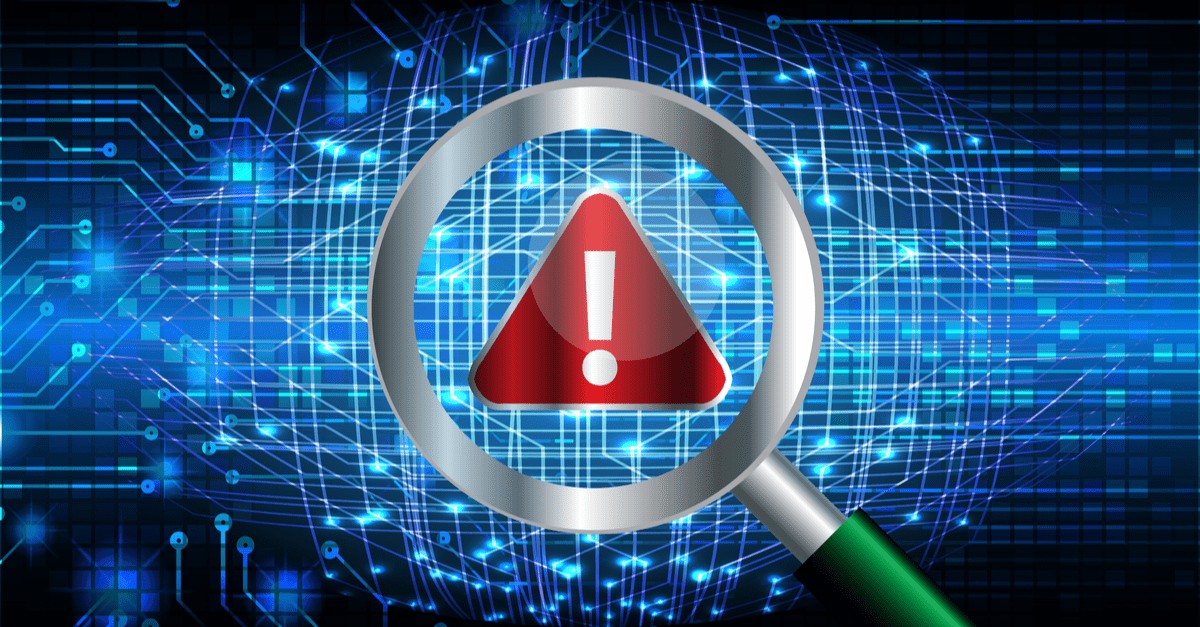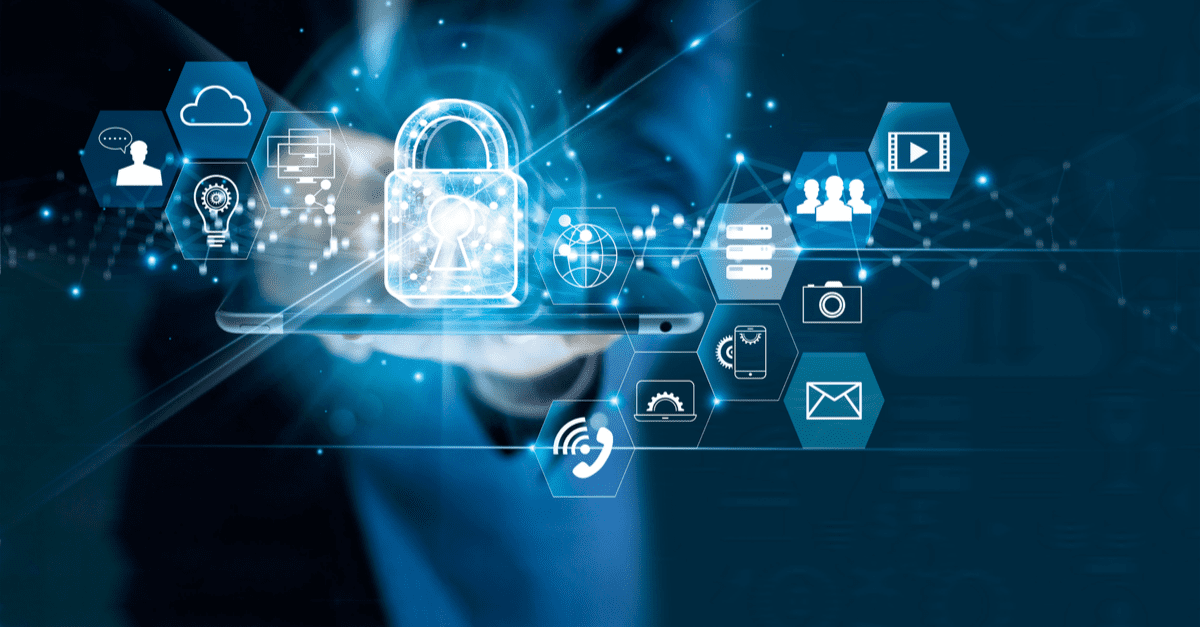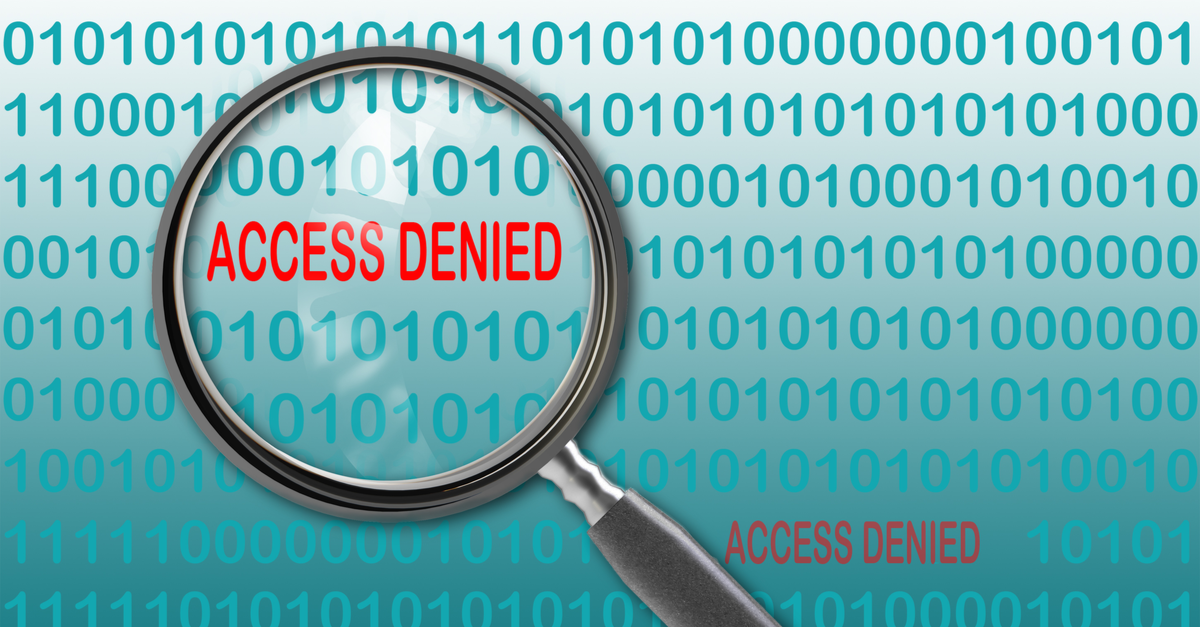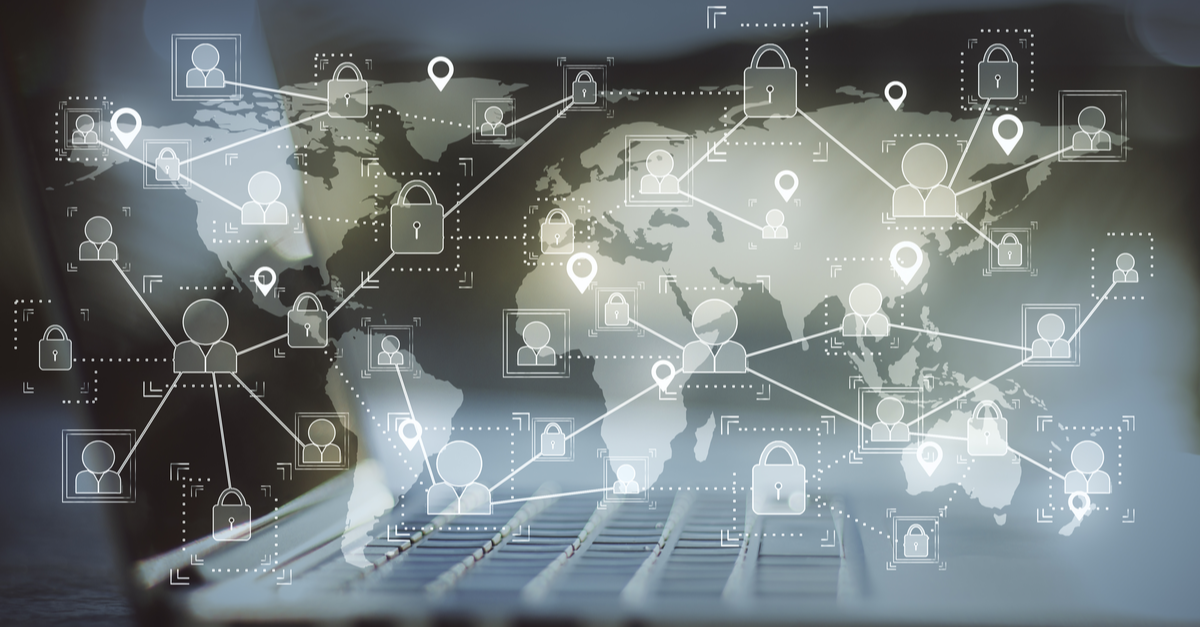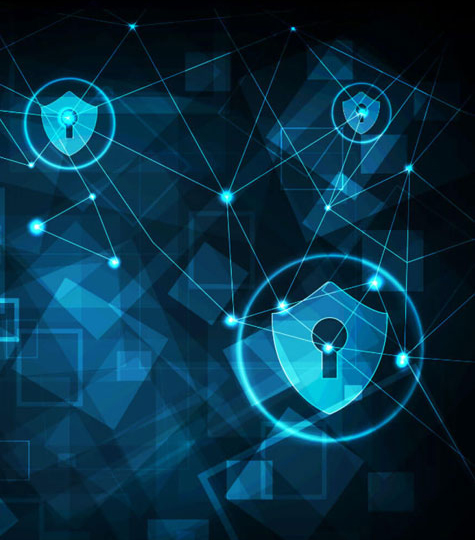Protecting ERP Data from Application Vulnerabilities Using A Multi-Layered Security Approach
You spend countless hours, not to mention considerable money, to secure your SAP and Oracle ERP data. One day, you discover that cybercriminals have exposed a vulnerability using an application misconfiguration. This has become increasingly common as criminals seek methods to covertly infiltrate applications to gain access to thousands of employee records.
This situation happened to Microsoft in December 2019 and didn’t generate the kind of headlines usually associated with data breaches. This was simply a human error. But these kinds of human errors and misconfigurations are one way that hackers can gain a foothold into your SAP or PeopleSoft ERP system. Now the question is, how are you going to protect your data after an attacker side-stepped your perimeter defenses?
Misconfiguration is the Fastest Growing Security Risk
According to the 2020 Verizon Data Breach Investigations Report, misconfiguration errors (failing to implement all security controls) are up 4.9% from last year’s report and are the fastest-growing risk to web applications. It’s easy to apply this kind of risk to legacy ERP systems because SAP and PeopleSoft environments often consist of millions of lines of custom code and custom-built components communicating with each other and to external systems through various APIs and interfaces bolted together over time.
On top of that, you’re dealing with an abundance of changes to roles, configurations, access controls, and compliance protocols to accommodate new business processes and evolving data privacy policies. If companies are not analyzing and monitoring the underlying security implications of all these changes and movement, they’re bound to face a similar situation as Microsoft with a backdoor left unlocked for any hacker to stroll through.
Finally, don’t forget that many organizations simply do not stay current with system updates and security patches. According to the Data Breach Investigations Report, only half of the vulnerabilities are patched within three months after discovery, leaving companies exposed to attacks against known exploits.
The Multi-Layered ERP Data Security Approach
The growing complexity of SAP and PeopleSoft environments make securing ERP data an enormous challenge. To prevent inadvertent exposures from misconfiguration, Greg Wendt, executive director of Appsian, suggests that companies “must adopt a multi-layered security approach with dynamic security tools that can monitor user access in real-time, providing transparency over what data is accessed and by whom.”
This multi-layered approach includes masking sensitive data, verifying identity via multi-factor authentication (MFA), and enhanced logging and analytics. Appsian adds layers of security WITHIN your ERP system to help ensure your data is still protected when a hacker strolls past your perimeter defenses, thanks to a misconfiguration.
Dynamic Data Masking provides contextual masking policies that adapt to the context of access. That means when a hacker attempts to access sensitive data fields but doesn’t match key attributes such as user ID, privilege, device, location, or IP address, they will encounter full, partial, click-to-view masking or complete redaction of the data field.
Adaptive MFA ensures that contextual attributes (ex. device, network, location) are the determining factor for deploying MFA challenges. For example, customers can require an MFA challenge when a user account is accessing the system from a remote IP address or after business hours.
Enhanced Logging and Analytics with Appsian360 allow you to monitor your networks for suspicious activity and provide detailed insights regarding how, when, and by whom transactions and data fields are being accessed. This visibility is particularly important for identifying users with high-privilege access who are accessing pages they shouldn’t be. The enhanced logging can trace all the pages a user accessed during a session, helping to identify a potential intrusion. This kind of real-time data access and usage visibility was previously unavailable to SAP and Oracle ERP customers.
Eyes and Ears on the Entire ERP Data Ecosystem at All Times
“The enterprise must learn to have eyes and ears on their entire data ecosystem at all times,” said Wendt. Microsoft’s recent data breach due to misconfiguration highlights the importance of a security strategy that continuously looks for misconfigurations and compliance violations. Next, they should establish a multi-layered security approach to prevent unauthorized data access, along with enabling organizations with the ability to identify access trends that may be indicative of incorrect access controls.
Misconfigurations are, unfortunately, a common error and should be treated with the same sense of urgency and level of effort by security professionals as their network perimeter. After all, not all attacks are external.
Contact us today to learn how the Appsian Security Platform and Appsian360 can help you establish a multi-layered security solution.
Put the Appsian Security Platform to the Test
Schedule Your Demonstration and see how the Appsian Security Platform can be tailored to your organization’s unique objectives
When it Comes to ERP Data Security, Context (of Access) Matters – Appsian360 Can Help!
Organizations using traditional, on-premise ERP applications like SAP ECC and Oracle PeopleSoft are facing a rapidly changing reality around the collection, storage, and usage of data. Aside from the growing number of compliance regulations they need to follow, such as GDRP, CCPA, and others, they face critical visibility gaps related (explicitly) to understanding ERP data access & usage. Especially at a fine-grained level.
This lack of visibility is exacerbated by organizations enabling remote and mobile access to their users, exposing them to a myriad of data security and compliance threats like hacking (phishing), along with fraud and theft from internal users. All of which result in the loss of millions of dollars each year.
Fortunately, ERP applications that were once considered a “black box” can now be enhanced with the most sophisticated logging and analytics technology available on the market. Introducing Appsian360, the first and only data access and usage analytics platform for SAP and PeopleSoft.
Why Context of User Access and Data Usage Matters
Far too often, user behavior is a mystery, resulting in security, fraud, theft, and business policy violations. Specifically, a lack of detailed insights regarding how, when, and by whom transactions and data fields are being accessed.
As they exist today, legacy on-premise SAP and PeopleSoft systems simply do not provide organizations the granular visibility and context of user access and data usage they need in real-time to make proactive and strategic decisions.
“For years, organizations have been operating with limited visibility, and current threats to ERP data have made this status quo completely intolerable,” said Piyush Pandey, CEO of Appsian. “Appsian360 is about knowing who is doing what – at a very granular level.”
With Appsian360, security and compliance leaders can drill into specific data access and know exactly who is doing what, where, and why. With that level of in-depth, contextual information, any red flag incidents can undergo a rapid response plan.
“The beauty of Appsian360 is it’s a comprehensive solution that provides actionable insights,” added Pandey. “We know that forensic investigations and time to mitigation costs organizations countless amounts of money – and we’re pleased that Appsian360 can alleviate much of this burden.”
Appsian360 for SAP and PeopleSoft
Appsian360 installs into your ERP web server and does not require any additional customizations. There are zero noticeable effects on application performance. Here’s a high-level look at what Appsian360 can do for you.
Detect Security Threats in Real-Time: Appsian360 proactively alerts you to security threats like hacking, phishing, misuse of privileged accounts, and many more. You can quickly receive the information required to fully enable forensic investigations.
Uncover Hidden Business Risks: Appsian360 helps you detect and respond to fraud, theft, and errors by employees and third parties (vendors, consultants, etc.). Companies can maintain a complete view of sensitive business transactions, and what (specific) users are doing.
Monitor Employee Productivity: Appsian360 helps you maintain oversight as users process and execute business transactions. You can use these insights to ensure efficient staffing and identify potential bottlenecks in critical HR, payroll, and finance activities.
Understand Data Access & Usage with More Clarity Than Ever Before
Organizations can no longer rely on having a lot of data. They need to start triangulating and developing context around the data they’re getting and how it’s being used. Appsian360 provides real-time data access and usage visibility previously unavailable to SAP and Oracle ERP customers.
To see how data security and compliance threats that were once considered “the price of doing business” are no match for the watchful eye of Appsian360, join us for a virtual demonstration on Thursday, August 13. You can register here: https://www.appsian.com/visibilty-using-appsian360/.
Contact us today for a personalized demo and find out how Appsian360 can fill critical visibility gaps for your organization.
Put the Appsian Security Platform to the Test
Schedule Your Demonstration and see how the Appsian Security Platform can be tailored to your organization’s unique objectives
CCPA Enforcement Is on Track to Start July 1, 2020. Are Your Data Privacy Strategies Ready?
Time is almost up for companies scrambling to get their data privacy strategies in compliance with the California Consumer Protection Act (CCPA). Beginning as early as July 1, 2020, the California Attorney General’s office can start enforcing the CCPA and handing out penalties of up to $2,500 per violation or up to $7,500 per intentional violation.
So, when exactly, will the CCPA become law? On June 1, 2020, the California AG took the final step before the regulations become enforceable by submitting the final text of the CCPA Regulations to the California Office of Administrative Law (the “OAL”). The OAL has 30 working days–plus an additional 60 calendar days related to the COVID-19 pandemic–to review the submission and approve it to become an enforceable law. Doing the math, the California AG can begin enforcing violations as early as July 1 or as late as September 1, 2020.
Strategies for Improving ERP CCPA Compliance
Companies using PeopleSoft, SAP ECC, S/4HANA and Oracle EBS are likely facing additional compliance challenges due to inherent limitations built into these legacy ERP systems. Let’s look at a couple of tactics for enhancing your ERP systems to improve compliance with CCPA and establishing the capabilities to prepare for the uncertainty around data privacy.
1: Enhance Visibility into User Activity
The CCPA requires organizations to implement appropriate security measures around personal data and satisfy data subject access requests (DSARs). That means businesses must know what personal data they store and the user activity going on around it. However, traditional ERP systems do not provide the required level of granularity.
To achieve detailed visibility around data usage, organizations need to expand their native logging capabilities by adopting a strategy that focuses on data access and usage. Meaning, organizations must capture contextual details like date of access, UserID, IP address, device, location of access, actions performed, etc.
This is information that is critical for compliance reporting and understanding how data is being used within your organization.
2: High Privilege Access Should be the Highest Priority for Strengthening DLP
When it comes to ERP systems, the static rules that govern access can be limiting because roles and privileges are user-centric, not data-centric. User-centric roles say a person (or group in most cases) can view something under any circumstances, while data-centric means the nature of the data defines the access. This gets organizations in trouble time and time again from a DLP perspective because high privilege users always have the ability to see more data than they actually need (to do their job.) This makes non-compliance with CCPA almost inevitable. Overexposure of data is your biggest enemy and governing access by static rules (aka ‘all or nothing access rules’) creates an enormous liability.
Implementing data-centric policies (typically through attribute-based access controls) ensures that a user can only access data deemed necessary and job-related. This is because the data itself is governing access – not a user role. For example, access to certain high-risk transactions can be restricted based on a user’s location – or access can be granted, but with masked data fields. With every variation of context, attribute-based access controls can pivot and adjust accordingly. By reducing the threat surface, companies can reduce the risk of data leakage and mitigate compromised access damages.
3: Use Real-Time Analytics and Data Visualization (SEIM) to Expedite Incident Response Time
Integrated and real-time analytics displayed on dashboards were always a “nice-to-have” feature for security teams; however, keeping CCPA deadlines of breach identification and reporting in mind, data visualization has become a must-have feature. These advanced dashboards equip security professionals with real-time snapshots of data usage. The drill-down capabilities allow for enhanced data discovery and exploration to expedite breach detection and response, helping organizations stay compliant with CCPA and other existing and upcoming regulations.
Ready or Not, CCPA Enforcement Has Arrived
If you’ve not wrapping up your CCPA compliance efforts by now, there’s no better time than the present to start (or continue down that road). Appsian can help you fast track your compliance efforts by enhancing your visibly and applying a data-centric ERP compliance framework.
The last thing any company wants is to discover that they’re out of CCPA compliance only when there’s a breach of the regulation.
Contact us to learn how Appsian can help you address your end-to-end security and compliance needs.
Put the Appsian Security Platform to the Test
Schedule Your Demonstration and see how the Appsian Security Platform can be tailored to your organization’s unique objectives
Your Network Access Could Be for Sale on the Dark Web. Why ABAC is Critical for ERP Data when Your Network is Vulnerable
Thanks to TV commercials for identity protection services, you’re forgiven for thinking that that dark web is primarily a place where criminals and hackers buy and sell personal information such as credit cards, usernames and passwords, and social security numbers (and other PII). Lately, however, the dark web has seen a flurry of activity for offers to purchase corporate network access, according to a recent “Access for Sale” report from Positive Technologies.
Criminals Are Becoming More Interested in Corporate Network Access
Just a year ago, according to the report, cybercriminals were focused more on trading in access to the servers of private individuals for as little as $20. During the second half of 2019, Interest has since picked up in the sale of access to corporate networks. In Q1 2020, the number of postings advertising access to these networks increased by 69 percent from the previous quarter. Prices have also increased: the average cost of privileged access to a single local network is now in the $5,000 range. Additionally, hackers are offering a commission of up to 30 percent of the potential profit from a hack of a company’s infrastructure.
It’s bad enough that your threat surface has increased due to so many employees working from home, now you have a posse of hackers roaming the dark web looking for bounties to collect. We have a few suggestions to help you keep your ERP data safe even if hackers manage to gain access to your corporate network.
Adopt Attribute-Based Access Controls (ABAC) to Strengthen ERP Data Security
Companies using ERP systems are already leveraging role-based access controls. These controls, which align data access privileges and job function resources, provide a baseline for data governance. With the rapid expansion to a remote workforce earlier this year, organizations needed to create more detailed and more dynamic access controls—policies to determine who, what, where, when, and how workers can access ERP data and what transactions they’re allowed to perform.
With attribute-based access controls (ABAC), a company can incorporate additional context such as geolocation, time of day, and IP address to both ensure the appropriate user is accessing the resources and prevent users from having more access than they need. For example, if the organization knows that an employee should be working from Connecticut, ABAC can prevent access to resources, mask highly sensitive data, or prevent a transaction entirely if the user’s location is suddenly California – or a foreign country.
These granular, data-centric access privileges can help an organization ensure that users–internal or malicious–do not get too much access to important ERP data – limiting the potential negative effects of a network intrusion by hackers.
ABAC Should be Coupled with User Activity Monitoring
Let’s revisit how ABAC helps organizations establish roles and permissions to determine who, what, where, when, and how workers can access ERP data and what transactions they’re allowed to perform. It’s important that you don’t set these controls and “forget” them. You want to make sure what you’ve established is working and to watch for any anomalies that reveal unusual or unwelcome activity.
Most organizations are already performing some kind of monitoring of user access – but it has to extend beyond manual audits of instances of logging in and logging out of applications and what pages were displayed. Understanding data access, usage, and transactions performed is now a key requirement when maintaining visibility over business data and enforcing security policies.
Here are five details we recommend monitoring (more details here):
- Who – Details of the User Accessing the Data
- What – Details of the Data Being Accessed
- Where – Location Where the User is Accessing the Data
- When –Time of Day When User is Accessing Data
- How – Type of Device Accessing Data
Data is only as useful as the insights it provides. Using an analytics platform that includes granular access details, rapid aggregation, and visualization of user access data is a crucial requirement for data security.
Conclusion
You know that hackers are already looking for any and all security lapses on your perimeter to gain access to your corporate network. The “Access for Sale” report serves as an important reminder that hackers are willing to do anything to gain an advantage, and organizations must deploy a variety of ERP data security protocols in addition to the standard role-based access controls.
Appsian has helped hundreds of organizations that leverage legacy ERP applications like PeopleSoft and SAP ECC strengthen their data security posture with ABAC and user-activity monitoring.
Request a demonstration of the Appsian Security Platform today. Learn how Appsian can help you manage the risks of the dark web in little as 30 days!
Put the Appsian Security Platform to the Test
Schedule Your Demonstration and see how the Appsian Security Platform can be tailored to your organization’s unique objectives
Does ERP Data Security Qualify as an Essential IT Project? Here Are Five Reasons Why It Does.
Stop me if you’ve heard (or spoken) this phrase: “All non-essential projects have been put on hold.”
To be fair, pausing large-scale IT projects (like a cloud ERP migration) in such an uncertain and unpredictable environment makes sense. If the project will take months to implement and it isn’t helping keep the lights on, it isn’t essential. Simple as that! But what is considered “essential” is often a matter of opinion rather than true importance.
A perfect example is ERP data security. When COVID-19 hit, many organizations began scoping enterprise security solutions like a VPN, which enables remote access. But only in the sense of creating an authentication point – not actually securing data. We touched on this more in a previous blog.
Enabling remote access with a VPN helps keep the lights on, but now that the lights are on (and will hopefully stay on), at what point do you consider the vast amounts of data exposure that have emerged as a NEW risk vector? As a direct result of remote access. This is the point where data security becomes essential.
Overlooked but Essential
ERP data security too often gets thrown into the “non-essential” project pile, with companies considering it an afterthought, regardless of the economic climate. Afterthought might be too harsh – perhaps they consider what they already have in place as “good enough.” Essentially making the decision to go into completely unprecedented times with legacy technology. Such thinking will leave your data fully exposed to theft, fraud, and other forms of damage. Alas, if you don’t prepare for the future, then the future is likely to be your downfall. This is why we think NOW is the perfect time to make ERP data security a high-priority – dare we say essential – project. Here are five reasons why.
1: Your ERP Data is Already Exposed
Just because your virtual front door is locked doesn’t mean there’s nobody in your house. Besides the fact that user credentials (including VPN credentials) are routinely stolen – insider threats are one of the fastest-growing trends in data breaches, accounting for 34% of attacks in 2019, according to Verizon’s 2019 Data Breach Investigations Report. In addition, many insider breaches occur simply by insiders unintentionally misusing data. Without proper data security and monitoring protocols in place, it’s difficult to know if users are leveraging their privilege to access sensitive information for either legitimate or malicious purposes.
2: Remote Access and Data Security Should Be Synonymous
A remote workforce is nothing new, but not to the scale caused by the COVID-19 outbreak. The rapid scaling of remote access for critical business functions left many companies relying on conventional (but outdated) security technology, like a VPN. All the while, not considering that remote access means an expanded threat surface – and the wider your threat surface, the more exposed your data is to risk. A VPN may leave you feeling like you shrank your threat surface, but you haven’t truly shrunk your level of risk. Today, the most devastating data breaches happen when credentials are stolen and/or insiders leak/expose data. In a remote access environment, credential/insider risks go up dramatically while a VPN does little to mitigate.
When allowing remote access to your ERP data, you need to monitor a variety of data points, such as where is a user coming from? What data are they trying to access? What device are they using? Is that device being used by the right person? Cybercriminals know these systems are vulnerable and are stepping up attacks.
3: Data Security is Not as Costly as A Data Breach
According to IBM’s Cost of a Data Breach Report, the average cost of a data breach is $4 million. The average cost of a breach in the U.S. is $8.2 million – more than double the worldwide average.
The risks posed by a data breach extend well beyond financial. They are operational as well as compliance-related. Then there are the difficult to quantify costs, including negative exposure and scrutiny for your brand and senior leadership.
4: Compliance Stakes Have Never Been Higher
Compliance mandates like SOX, GDPR, CCPA, and others require organizations to maintain details regarding data access, and places a substantial liability when companies are not taking appropriate measures to secure ERP data. Fortunately, organizations can improve compliance by implementing data security tools that respond to insider threats, minimize direct damage caused by a breach, and reduce (or even void) penalties incurred by compromising customer data.
5: ERP Data Security is A Manageable Problem
An essential project doesn’t mean it’s complicated or burdensome. In fact, this is one of the more manageable problems to solve, as adding data security doesn’t involve much change management – unlike a cloud migration project. The key is to NOT customize the application(s) but to seek solutions that are configurable. Customizations are not a quick fix – they are not scalable and place additional complexity on support down the line. Configurable solutions to these challenges exist – trust us!
Data Protection Can Help Keep the Lights On
You could argue that an ERP data security project isn’t going to help keep the lights on; therefore, it isn’t essential. We would say that any project that helps mitigate business and security risks by enhancing your ability to authenticate users, control access to data, and monitor & respond to potential threats, is essential. And if that project can protect you from fines, theft, and fraud due to a data breach in this current work environment? That’s money you can use to keep the lights on.
Request a demonstration today to learn how Appsian can help you with your essential ERP data security project.
Put the Appsian Security Platform to the Test
Schedule Your Demonstration and see how the Appsian Security Platform can be tailored to your organization’s unique objectives
Access Governance is Critical for Preventing Phishing Attacks
The news is flooded with stories about cybercriminals successfully engaging in phishing and social engineering aimed at exploiting people’s COVID-19 fears, all in order to steal user credentials to business applications and VPNs. From fake delivery notifications to World Health Organization (WHO) impersonations, malicious actors are preying on people’s emotions during this pandemic.
The credentials used for authentication are ultimately an organization’s network perimeter. This puts organizations in a difficult position — they can limit employee’s access to these systems and risk negative impacts on productivity and business continuity, or they could bury their head in the sand and hope nothing bad happens. Many are choosing the latter, and the implications are being felt worldwide.
Why There is a Correlation Between a Stressful Environment and Cyber Attack Volume
Social engineering fundamentally relies on taking advantage of strong emotions to trick people into taking actions that can cause them harm. This crisis has emotions running high, and many employees are stuck in a state of fight or flight.
Research shows that stress impairs the brain’s ability to make decisions. That’s why, when people are under stress, they often take more risks and engage in activities that could cause them harm. In other words, employees are not forgetting their phishing trainings, their brains are functionally incapable of making good decisions.
Cybercriminals rely on emotional responses — whether it’s clicking on links, downloading documents, or opening attachments — emotionally charged content (e.g., fake layoff announcement email with a malware attachment) is more likely to result in a successful attack
The problem isn’t the people, it’s the cybercriminals and the tactics they use.
How to Prevent Phishing Attacks?
The Principle of Least Privilege
Often, companies view data protection solely from the compliance and financial risk perspective. Unfortunately, this doesn’t go nearly far enough. It is recommended that companies consider limiting user access to resources based on the principle of least privilege, or the absolute minimum access necessary to complete a job function. Least privilege is a governance strategy that has never been more relevant than today — especially as organizations rely on remote workforces. Fundamentally, when users have more access than necessary, they may accidentally (or intentionally) violate compliance requirements designed to protect the organization.
Today, access governance is largely dictated by predetermined roles and permissions usually classified into groups (administrator, power user, etc.) This classification of permissions is tied to authentication processes like username/password security models that are heavily targeted by cybercriminals through phishing and social engineering. Further, if a phishing attack compromises a user’s credentials, then the cybercriminal may access or acquire as much sensitive data as their victim’s role will allow. This is precisely were least privilege should kick in.
The rise of phishing attacks that target coronavirus fears not only places organizational data at risk, but it also places employees at risk — especially those with high privileges. Many employees use the same credentials for multiple applications, such as social media networks and shared cloud drives. If one set of credentials is compromised, multiple systems are now at risk.
Limiting access to data according to the principle of least privilege provides organizations with the tools necessary to prevent catastrophic data breaches. A good question to ask yourself is, what data should my administrators and power users have access to? Do they need easy access to executive payroll data? Do they need easy access to other employee social security numbers? What do they really need easy access to in order to do their job?
The truth is, they will likely need access to some sensitive data, so how do you protect data that still falls under the principal of least privilege?
Zero Trust
“Zero trust” often sounds harsh — trust no one, assume a threat at all access points, and never grant access by default (e.g., a predetermined role and privilege.) At first glance, this mentality appears to go against corporate values like collaboration and integrity, but, in reality, it fosters them.
Moving toward an IT culture based on zero trust means that an organization can identify all devices, users, applications, and data across its ecosystem. Then, the organization can establish the appropriate controls that limit access where appropriate.
Fundamentally, a zero trust model encourages collaboration and integrity while also supporting employees who mean well but could be making risky decisions while under stress — coronavirus related or otherwise. By setting zero trust identity and access controls, organizations ensure constant alignment between who an employee is and what they have access to, thus, mitigating risk.
Multi-Factor Authentication
Part of establishing an effective zero trust model involves finding solutions that allow organizations to apply contextual attributes when granting access. Attribute-based controls adapt to different contexts and ultimately drive how and when users can access information. For example, an attribute might be geolocation or time of day. Adaptive multi-factor authentication (MFA) takes these attributes and requires additional authentication as users move across systems or within applications. For example, to log into an ERP system, passing a standard authentication challenge is required. Then, to update direct deposit or access payroll information, an adaptive MFA challenge should be deployed. Zero trust means that just because they passed through the front door of the application, they can’t execute the most sensitive transactions.
As employees work remotely, organizations may want to incorporate adaptive MFA so employees in finance or human resources can securely authenticate to their ERP systems. Adaptive MFA will detect anomalous locations or times for activity, trigger an additional authentication process, and prevent malicious actor access.
Ultimately, zero trust and adaptive MFA protect the organization, the person whose information was almost leaked, and the employee whose credentials were stolen. The organization can be alerted to the cyber criminal’s attempt to gain entry to its networks, the person whose data was almost leaked retains privacy, and the employee whose credentials were phished is protected from the negative impact of their privilege being hijacked.
Remote Access Means Phishing and Phishing Requires Additional Strategies
Organizations have tried to protect themselves from phishing attacks for years. What they have not done is protect themselves during a time of social, emotional, and physical upheaval. But, the current upward trend in phishing attacks should come as no surprise to organizations. Cybercriminals never rest — they take advantage of any weaknesses in an IT ecosystem, both digital and human.
Maintaining strong identity and access governance strategies ensures that both data and end-users can be protected during these strange and unusual times.
This article was originally published by Mission Critical Magazine.
Put the Appsian Security Platform to the Test
Schedule Your Demonstration and see how the Appsian Security Platform can be tailored to your organization’s unique objectives
Why the Keys to Maintaining ERP Data Security in a Remote Environment are Control and Visibility
Remote workforces are nothing new to most organizations. According to Buffer’s 2019 State of Remote Work report, 44% of respondents noted that at least part of their team was “full-time remote,” and 31% said that everyone on the team works remotely. Further, at the time of the report, 30% of respondents said that their entire company worked remotely. However, the COVID-19 pandemic accelerated the work-from-home model. By March 31, 2020, the percent of users working remotely had increased 15 percentage points since the start of the COVID-19 outbreak. With that in mind, organizations are assessing how they can maintain granular levels of control and visibility when ERP data is being accessed remotely.
Adopting Contextual Controls to Protect ERP Data
Most organizations already leverage role-based access controls. These controls, which align data access privileges and job function resources, provide a baseline for data governance. However, they often lead to excessive levels of data access and, in turn, produce additional risks. Contextual controls enable an organization to dynamically control access to data during varying contexts of access, often aligning to least privilege best practices. Migrations to cloud applications are largely due to contextual controls being a business requirement, simply because the interconnected applications required a more dynamic approach.
With the move to a remote workforce, organizations need to create more detailed and more dynamic access controls. With attribute-based access controls (ABAC), a company can incorporate additional context such as geolocation, time of day, and IP address to both ensure the appropriate user is accessing the resources and prevent users from having more access than they need. For example, if the organization knows that an employee should be working from Connecticut, ABAC can prevent access to resources if the user’s location is suddenly California – or a foreign country.
Contextual controls provide both the prevention of access policy violations, along with alignment between business requirements and security protocols. Because the organization can limit access according to the principle of least privilege, it reduces the risk of data leakage and financial fraud. Meanwhile, by creating more granular, data-centric access privileges, an organization can ensure that users do not get too much or not enough access – limiting the potential negative effects of restricting access excessively.
User Activity Monitoring for ERP Data Security and Managing Productivity
Monitoring user access to resources and tracking how users interact with data provides an additional benefit for many organizations as their workforces move towards a remote model. Most organizations recognize the benefit of monitoring user access – but not just instances of logging in and logging out of applications. Understanding data access and usage is now a key requirement when maintaining visibility over business data. Organizations are turning to analytics platforms that both include granular access details, along with a visualization element (for example, SIEM). Data is only as useful as the insights it provides, and rapid aggregation and visualization of user access data is a crucial requirement for data security.
Using “Virtual” Work Hours
Looking at a common security use case, many organizations leverage “virtual” work hours to detect anomalies. For example, an employee usually works between the hours of 8 AM and 6 PM but monitoring and alerting to activity around sensitive data at 3 AM, for instance, can be indicative of unauthorized behavior. This uncharacteristic behavior may be an anomaly, but the organization needs to monitor the user activity more closely. If the user denies accessing the information at 3 AM, then the organization needs to focus its monitoring and have the employee change their password. If the organization detects additional unusual activity, then it may need to review the employee’s activities or investigate a potential data breach.
Monitoring User Productivity
From a workforce management perspective, organizations can leverage these insights to review employee productivity. Two use cases present themselves. First, many organizations have contracts that stipulate late payments incur a late fee. If the organization knows that employees should be processing payments ten days prior to the payment date, then they can leverage these reports to ensure that employees meet their timelines, even from a remote location. Additionally, by tracking resource usage data, organizations can monitor whether workforce members are appropriately prioritizing their workdays. If the employees are only accessing a business application at the end of the month, then they are likely waiting until the last minute to input payment information. Preventing these potential revenue losses or rush projects in other areas by speaking with the employee enables the organization to stay on top of its financials.
Enabling Visibility for Business Applications Has Never Been More Critical
Creating trust within and across distributed workforces ensures productivity. However, continued status update meetings across multiple time zones decrease workforce member efficiency. Organizations already monitor user access to their systems, networks, and applications. As part of a robust security posture, organizations should apply protections at the new perimeter – user identity. Rather than micromanaging employees via emails or chats, managers can gain valuable insight into how users are accessing resources and prioritizing work schedules by reviewing data and resource usage.
In an unprecedented time, companies need to find ways to enable their levels of control and visibility over business data. Whether a business application is on-premise or in the cloud, enhancing these solutions should be a mission-critical objective.
Risks against an organization are prevalent in a remote environment, whether those risks are security-related or employee-related by fraud, theft, and error. The keys to maintaining ERP data security ultimately lie in your ability to provide oversight for your data, and the time to act is now.
This article was originally published on Global Trade.
Put the Appsian Security Platform to the Test
Schedule Your Demonstration and see how the Appsian Security Platform can be tailored to your organization’s unique objectives
ERP User Activity Monitoring: Here are the (5) Most Important Details to Capture
Analytics have always been necessary for informing ERP data security policies. This has never been more relevant than today, in this everybody-works-from-home environment where function leaders are scrambling to attain oversight and accountability. With whole departments spending 8 hours a day in business applications like PeopleSoft and SAP, establishing strong ERP user activity monitoring strategies is mission-critical. We also touched on this topic a few weeks ago, but now that organizations are adopting visibility solutions, the question becomes – what are the most important details to capture?
Always Capture the Who, Where, When, What, and How
Remember the good old days of February 2020 when articles touted the growing trend of working from home and that remote access to your ERP system and making transactions available on the internet will one day become the “new normal?” Ah, good times.
Then COVID-19 happened, and remote work went from growing trend to hard-core reality in a matter of days. System administrators scrambled to collaborate with managers to create new or updated work-from-home polices that determine who, what, where, when, and how workers can access ERP data – and what transactions they’re allowed to perform. Good times, indeed.
Let’s break down these different details…
1. Who – Details of the User Accessing the Data
Even if your user authentication strategies are strong (ex. leveraging multi-factor authentication), you’re still going to have security concerns – especially with high privileged user accounts. Narrowing your visibility efforts on high privilege user activity allows you to focus on the accounts that can cause the most damage (if corrupted or misused.) For example, your organization may be global (with ERP access coming from multiple countries) but your high privilege users may primarily reside near your domestic HQ. High privilege access coming from outside this IP range may be an early sign of unauthorized activity.
2. What – Details of the Data Being Accessed
What are those Tier 1, highly sensitive data fields you want to closely watch? I’m talking about C-suite salary information, social security numbers, bank account information, etc. Application level logging falls short in showing exactly what a user accessed. However, these details are ultimately the most important. If you do not have visibility into exactly what a user accessed, then you are missing a significant part of the data security puzzle. In many instances, field level logging can show you how much “over access” users may have. After all, least privilege is a best practice – especially in remote environments.
3. Where – Location Where the User is Accessing the Data
As mentioned above, location can be a leading indicator of unauthorized activity. This strategy can be expanded, especially if you’re operating in a vertical that typically doesn’t require global access (ex. higher education, healthcare, state & local government, etc.) Whether it is a sudden influx of authentication requests from China or one-off access from a European country, having location data is an essential component of ERP user activity monitoring.
4. When –Time of Day When User is Accessing Data
Thanks to stay-at-home orders, normal 8 to 5 work hours don’t apply when users must (potentially) deal with kids or other distractions. Simply enacting policies that restrict certain transactions from being executed outside of business hours is a quick way organizations can enhance oversight – but how can you really enforce it at scale? Either way, monitoring after hours activity, while not an obvious indicator of a problem, is a solid baseline. Especially if most ERP processing activities are being executed by hourly employees.
5. How – Type of Device Accessing Data
One of the difficult aspects of rapidly deploying remote ERP access is getting an inventory of all the devices they’ll use. Corporate-managed vs personal devices have a large impact on how you want sensitive business data accessed. Even if every employee has a company-issued device, you’re bound to see unauthorized devices (mobile phone, tablet, personal workstation or laptop, etc.) accessing your system. Knowing exactly what these devices are accessing (or possibly downloading) is extremely important for data loss prevention.
Real-Time User Activity Monitoring Leads to More Informed ERP Data Security Decisions
Using the Appsian Analytics Console, you get a 360-degree view of what is happening around your ERP data. From there, you can map out a targeted incident response before damages become catastrophic and influence your ERP data security policies.
Some additional examples of ERP data security measures you can deploy include:
- Enabling adaptive authentication policies that deploy additional authentication challenges based on the context of access
- Restricting the availability of specific transactions (partial or full) when access is coming from unwanted geographic locations
- Masking any data field (partial or full)
Appsian enables organizations to enhance their level of control and visibility over business data. To ease the anxiety of allowing remote ERP access, Appsian can help you make the rapid changes (avg. go-live in 2 weeks) necessary to manage and mitigate risk.
Request a demonstration of the Appsian Analytics Console today.
Put the Appsian Security Platform to the Test
Schedule Your Demonstration and see how the Appsian Security Platform can be tailored to your organization’s unique objectives

